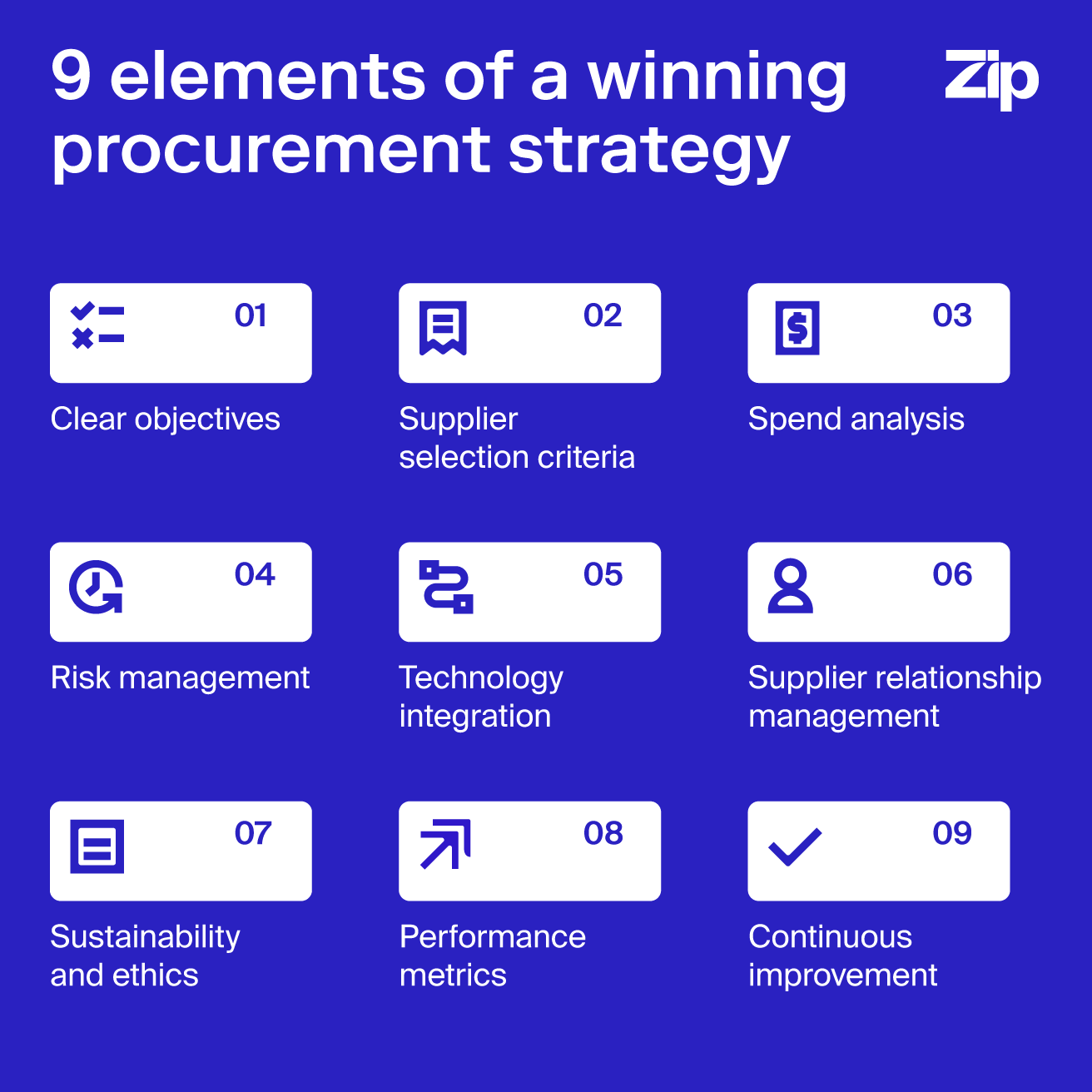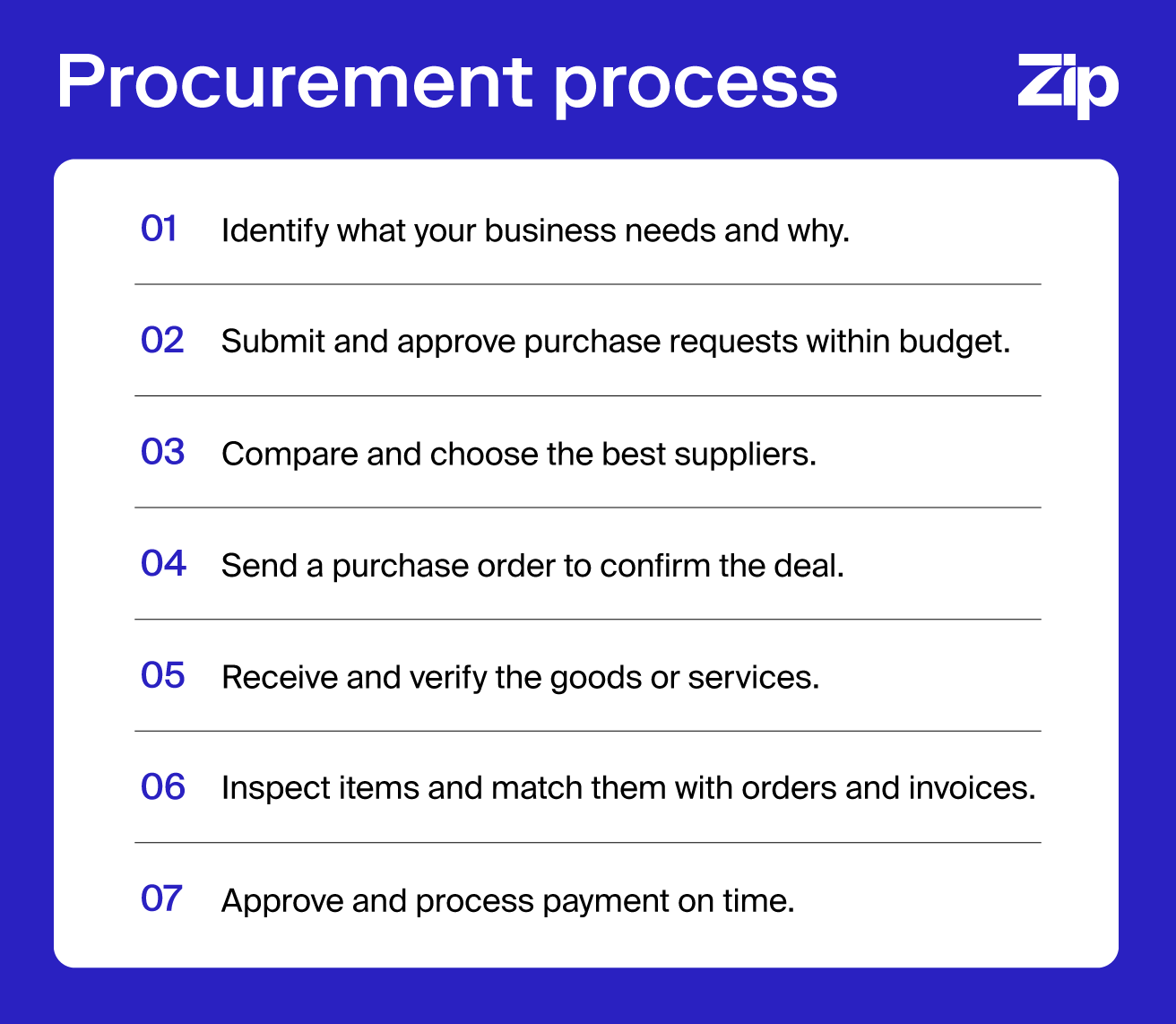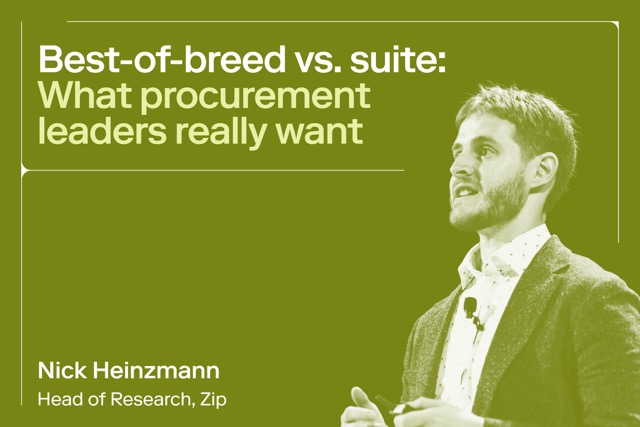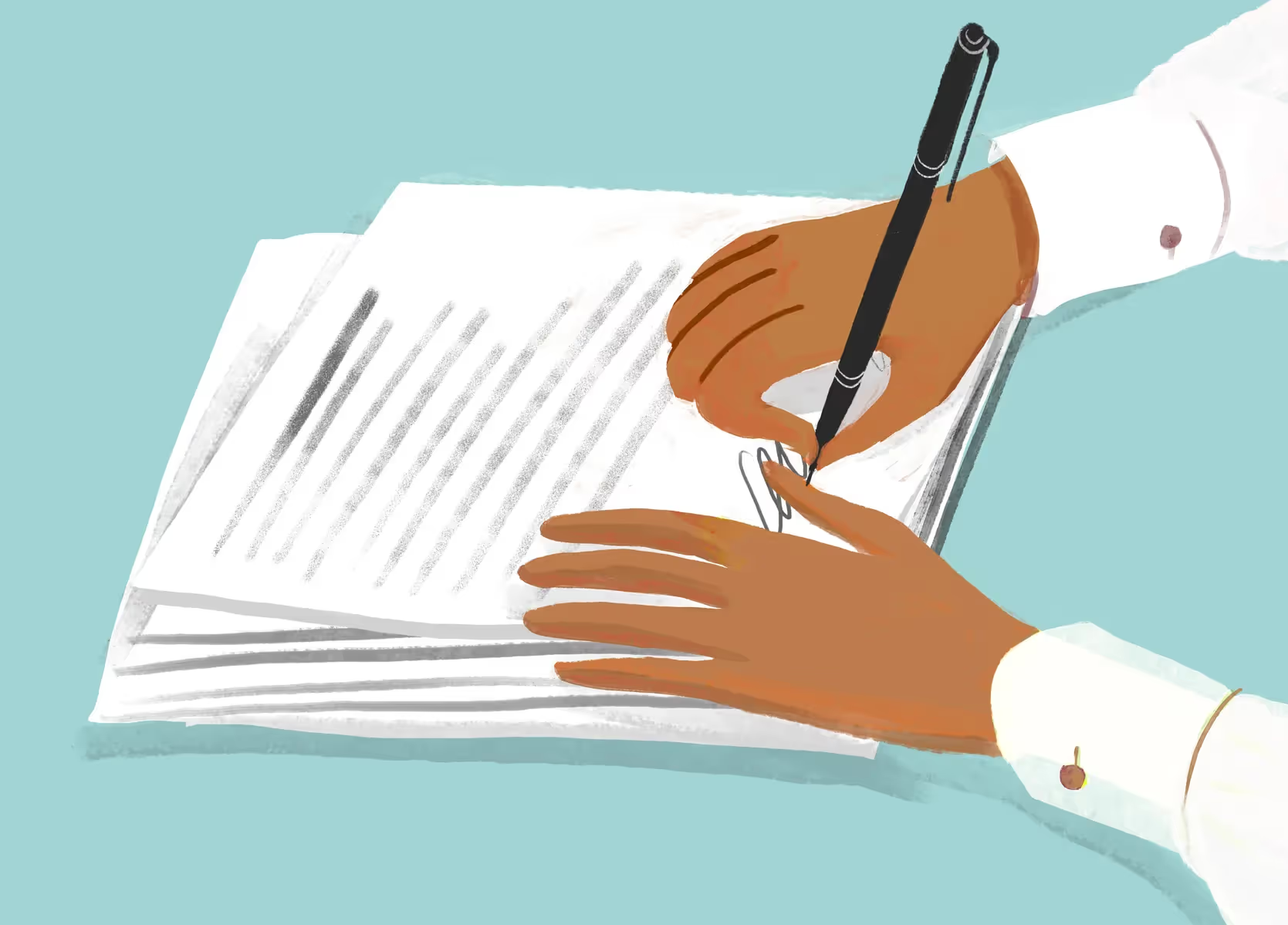
10 procurement best practices to unlock efficiency and savings
Learn the best practices that eliminate inefficiencies and boost team potential.

As we march toward 2026, it's clear that operational efficiency in all business verticals, from product to procurement and beyond, is the primary driver of growth for companies in any market, at any scale.
Procurement, in particular, is evolving fast, with new technologies and smarter strategies reshaping how businesses source, manage, and spend. But more than that, shifting markets, regulatory frameworks, and supplier relationship strategies require new, more thoughtful ways of working day-to-day.
In this article, we dive into five forward-thinking procurement best practices designed for procurement process improvement to cut inefficiencies and unlock the full potential of your team.
Procurement meaning
Procurement is the process of sourcing, buying, and managing the goods and services a business needs to operate. It’s about finding the right suppliers, negotiating the best terms, and making sure purchases align with budgets, compliance rules, and business goals.
Done right, procurement helps teams move faster, cut costs, and reduce risk. Typically, procurement is handled by dedicated procurement teams or finance and operations leads.
Top 10 procurement best practices
When it comes to procurement, excellence is not achieved by adhering to the status quo methodologies but by continuously evolving and embracing innovative procurement ideas that drive strategic value.
Here are the 10 best practices you need to focus on throughout the rest of the year.
1. Emphasize sustainable procurement
Amid increasing global focus on sustainability, procurement teams are now primary players in promoting environmental and social governance (ESG) at their companies. Sustainable procurement extends beyond simple compliance with regulations; it involves embedding sustainability into the core procurement strategies to drive initiatives like a circular economy and reduce environmental footprints.
Organizations leading the charge are not only seeing enhanced brand reputation but are also achieving substantial cost savings through more sustainable material choices and streamlined waste management processes both in short and long-term strategic sourcing.
2. Foster supplier relationships
Modern procurement is fundamentally relational. The era of viewing suppliers merely as vendors has given way to a paradigm where strategic supplier relationships foster collaborative growth and innovation. This shift involves regular engagement and development programs that align suppliers with the company’s business goals. Long-term partnerships are cultivated through shared visions and commitments to mutual benefits, leading to improved supply chain resilience and innovation.
3. Leverage data for strategic decisions
Data is the cornerstone of modern procurement. Advanced analytics and real-time data tracking empower procurement professionals to make informed decisions about sourcing, risk management, and cost optimization.
By effectively using procurement tools like Zip that incorporate agentic AI and machine-learning methodologies, companies can identify patterns and predict trends, turning data into a strategic asset. This data-driven approach enables procurement leaders to optimize their purchasing strategies, forecast needs, and identify the best moments to enter the market, ensuring maximum efficiency and cost reduction.
4. Align procurement with business goals
Procurement should not operate in isolation; it must be a driving force aligned with the broader business objectives. Whether it’s scaling operations, entering new markets, or enhancing product quality, procurement strategies should be intricately linked with the company’s goals. Effective alignment involves regular audits and adjustments to procurement policies and practices to ensure they contribute directly to achieving business targets.
5. Position procurement as a strategic partner
It's essential to elevate the role of procurement from tactical support to a strategic entity. You can do this by involving procurement teams early in the strategic planning process and equipping them with the tools and authority to make decisions that affect the business at large.
With capabilities like those provided by Zip for Procurement, teams can take on more significant roles, such as driving business innovation and leading cost management initiatives.

6. Involve procurement early in product development
Involving procurement early is a purchasing best practice that can help identify the best suppliers, negotiate pricing on materials, and flag potential supply chain risks before they derail timelines. This proactive approach prevents costly last-minute changes and keeps production on track.
Early procurement engagement also means better alignment between product specs and sourcing capabilities. Instead of scrambling to find parts or services that fit after design is finalized, procurement helps shape the product around what’s realistically available and most cost-effective.
7. Implement supplier diversity programs
Actively including vendors from underrepresented groups brings fresh perspectives, sparks innovation, and can open doors to new markets. Plus, it strengthens your company’s reputation and meets growing expectations from customers and stakeholders for social responsibility.
But this isn’t a one-and-done effort. Successful programs require setting clear goals, tracking progress, and building genuine partnerships with diverse suppliers. Over time, this approach drives healthier supply chains that are more resilient, competitive, and reflective of the communities your business serves.
8. Use predictive analytics to forecast demand and risks
By analyzing historical data and market trends, businesses can anticipate demand spikes, supply shortages, and potential risks before they happen. This foresight lets teams plan smarter, ordering the right amount at the right time and avoiding costly stockouts or overstock.
Predictive analytics can identify vulnerabilities in your supply chain, like a supplier’s financial instability or geopolitical risks, that might disrupt operations. Using this data, procurement teams can make proactive decisions, switch suppliers if needed, and build contingency plans, turning uncertainty into a competitive advantage.
9. Automate routine procurement tasks
Automation is about cutting out the busywork that slows teams down. Tasks like purchase order approvals, invoice processing, and vendor onboarding can be automated to save time and reduce human error. This frees up procurement professionals to focus on strategic work like supplier negotiations and risk management.
Beyond efficiency, automation improves accuracy and transparency. With digital workflows, every step is tracked, approvals happen faster, and it’s easier to spot bottlenecks or compliance issues. In the end, automating routine tasks makes procurement faster, smarter, and less prone to costly mistakes.
10. Conduct regular supplier performance audits
Regular supplier audits are essential to keep your supply chain reliable and high-quality. These audits assess everything from delivery times and product quality to compliance with contracts and regulatory standards. By routinely checking supplier performance, you catch issues before they turn into bigger problems that can disrupt your operations or damage your brand.
Audits help build accountability and transparency with suppliers. They create a feedback loop where suppliers clearly understand your expectations and have the chance to improve. This ongoing evaluation strengthens relationships and ensures you’re getting the best value and service over time.
Benefits of implementing procurement best practices
Implementing procurement best practices is essential for any organization that wants to stay competitive and sustainable. These procurement management practices improve everything from daily operations to long-term strategy, driving real impact across costs, risks, and reputation.
Key benefits include:
- Cost savings and efficiency: Streamlined workflows and smart use of procurement tools cut waste, reduce manual work, and ensure every dollar spent delivers maximum value.
- Risk management: Diversifying suppliers and using real-time data to monitor risks protect the supply chain from disruptions and market volatility.
- Sustainability and ethical sourcing: Responsible procurement meets regulatory standards and stakeholder expectations while boosting your company’s reputation and long-term viability.
- Improved supplier relationships: Regular communication and performance tracking build stronger partnerships that lead to better pricing, quality, and innovation.
- Enhanced compliance and transparency: Clear processes and documentation help meet legal and internal policy requirements, reducing audit risks and improving accountability.
7 steps of the procurement process
These steps guide you from identifying what you need to paying the supplier, creating a reliable framework that supports smooth operations and strong supplier relationships. Let’s break down each step to see how they fit into the bigger procurement picture.
1. Identify needs
Every procurement process starts with recognizing a specific business need; whether that’s new equipment, software, or outsourced services. This step involves collaboration between teams to define what’s required, when it’s needed, and why it matters.
2. Create and approve purchase requisition
Once a need is defined, a team member submits a purchase requisition, a formal internal request for approval. It’s reviewed by finance or procurement to ensure it fits within budget, aligns with policy, and is genuinely needed.
3. Select suppliers
After approval, procurement sources the right supplier. This may involve comparing quotes, evaluating supplier track records, and negotiating terms. The goal is to choose a supplier that balances cost, quality, reliability, and risk.
4. Issue purchase order (PO)
The procurement team creates a purchase order and sends it to the selected supplier. It’s a legally binding document that outlines the exact items or services being purchased, delivery terms, pricing, and other key details.
5. Receive goods or services
Once the supplier delivers, the receiving team confirms that the goods or services match what was ordered. Timely delivery and proper documentation avoid bottlenecks and miscommunication.
6. Inspect and match goods with PO
The receiving party inspects the items for quality, quantity, and accuracy. The procurement or finance team then matches the delivery with the original PO and invoice to ensure everything aligns before releasing payment.
7. Process invoice and payment
After verification, the accounts payable team approves the invoice and sends it through for payment based on agreed-upon terms. This step may involve routing through AP systems and ensures the supplier is paid accurately and on time.

How to leverage technology and automation in procurement processes
The integration of artificial intelligence (AI) and machine learning (ML) into procurement is transforming how organizations operate and is now a key part of technology procurement best practices.
These tools help automate processes, improve decision-making, and set a new standard for efficiency and accuracy in procurement management.
These technologies also streamline the procurement cycle, enhancing everything from contract management to strategic sourcing. By automating routine tasks such as data entry and purchase order processing, AI reduces manual errors and frees up team members to focus on more strategic tasks.
Streamlining the procurement cycle with predictive analytics
The role of AI in enhancing the procurement function extends to the use of predictive analytics, which helps procurement teams forecast market trends and make proactive decisions.
For example, AI algorithms can analyze historical data and current market conditions to predict when the price of essential materials will increase, allowing companies to purchase ahead of price rises, thus optimizing total cost and protecting the bottom line.
Automation in vendor management
Another area where AI is proving invaluable is in vendor management. By automating the assessment of vendor performance and compliance, AI technologies enable more consistent and objective evaluations. This leads to more effective supplier relationship management, ensuring that only the best-in-class providers are part of the enterprise's supply chain network.
Automating routine tasks
The automation of mundane tasks can drastically reduce bottlenecks within the procurement cycle. AI-driven systems handle complex sets of data at speeds no human could achieve, ensuring that procurement teams can respond to internal and external changes with unprecedented speed and efficiency.
Predictive analytics for better sourcing decisions
Utilizing AI for market analysis and supplier selection represents a significant shift towards strategic sourcing. Predictive analytics enable procurement leaders to identify potential supply chain disruptions before they occur, adapt their strategies in real-time, and maintain steady supply chain management despite fluctuating market conditions.
FAQ about procurement
Have questions about how procurement works or what to expect from a modern strategy? Here are some quick answers to the most common procurement questions.
What are the top challenges for procurement?
Procurement teams face a range of challenges that can hinder efficiency and impact results. Staying ahead means constantly monitoring the procurement cycle and adapting strategies to prevent small issues from becoming major setbacks.
- Global supply chain disruptions: Events like pandemics, political unrest, or natural disasters expose supply chain weaknesses. Effective procurement requires flexible planning and quick shifts in strategy to keep operations running smoothly.
- Keeping up with technology: The fast pace of digital transformation means procurement teams need to stay updated on new tools and automation to improve workflows and cut manual tasks.
- Regulatory compliance and risk management: Changing laws and regulations create ongoing compliance challenges. Leveraging AI and machine learning helps track these shifts, automate adjustments, and reduce legal and ethical risks before they escalate.
What are some future procurement trends to watch out for?
The procurement landscape is driven by new priorities and tech advances that are redefining the role and impact of procurement teams.
- From tactical to strategic: Procurement is evolving from a back-office function to a strategic powerhouse. Leaders now leverage cloud-based platforms and data analytics to guide company-wide decisions with better insight and precision.
- Sustainability and circular economy: Green procurement is no longer optional. Businesses are focusing on suppliers that prioritize sustainability and designing RFPs to support circular economy principles like reuse and recycling.
- Blockchain and smart contracts: These technologies promise to boost transparency, speed, and security by automating contracts and verifying transactions, potentially transforming the entire procurement process.
Gain a competitive edge with Zip
The procurement landscape is evolving rapidly, with new technologies, tools, and global challenges reshaping how businesses operate. Staying competitive means adapting to these changes and turning procurement into a strategic advantage.
Zip for Procurement is built for this new reality. From simplifying requests with a centralized portal to automating approvals and delivering AI-driven insights, Zip streamlines operations and drives smarter decisions.
Ready to see how Zip can transform your procurement into a true business driver? Request a demo today and take the first step toward procurement excellence.

Maximize the ROI of your business spend

Enter your business email to keep reading



























.webp)



















.avif)













.avif)










.webp)





.avif)












.avif)
